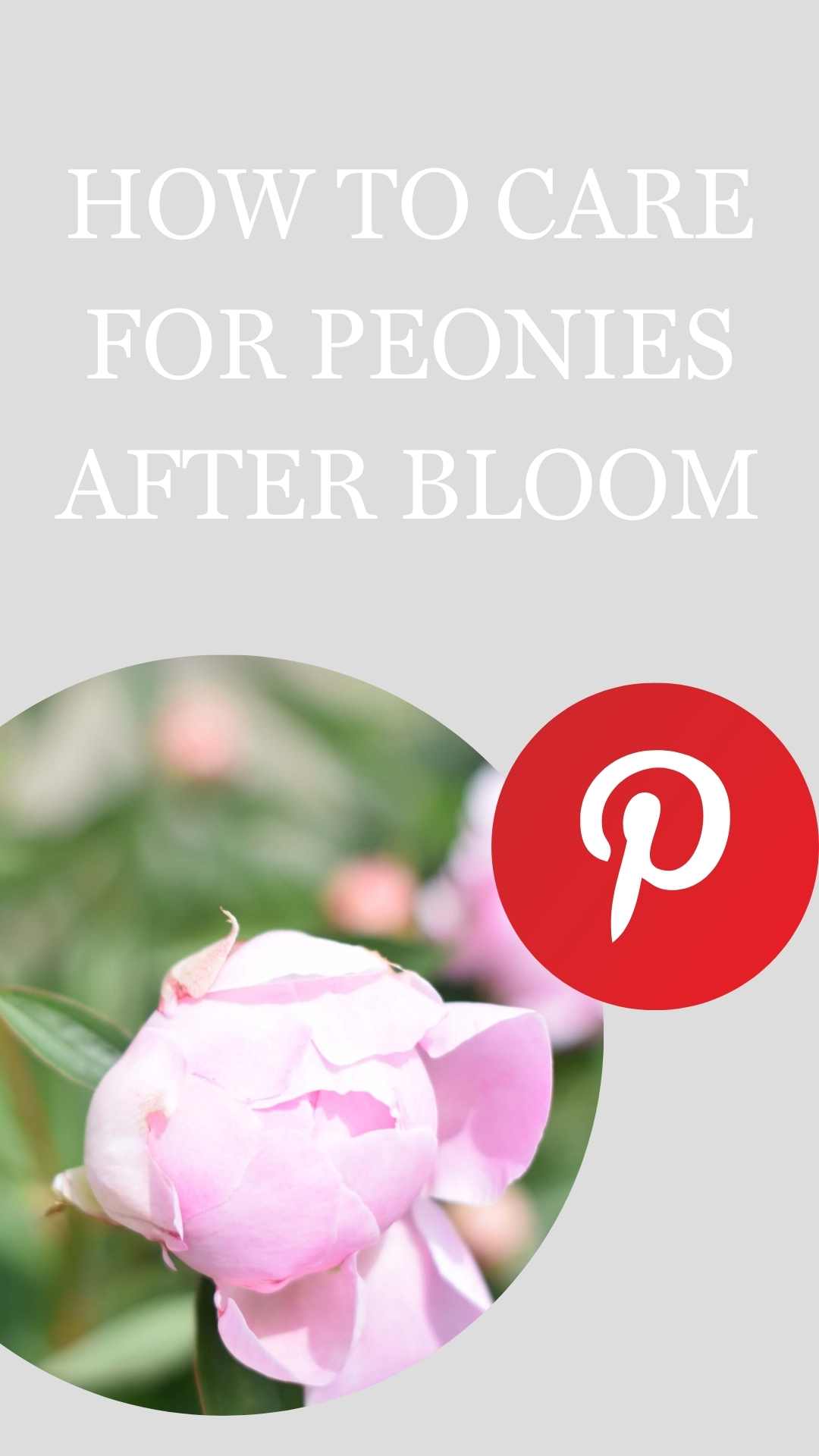My love for the peony started when I got a beautiful pink peony that used to be in my grandfather and grandmother’s garden. Of course I want to take good care of that. It has been blooming beautifully for years, but proper care for the peony is important. Let’s see… How to care for peonies after bloom? Should you cut a peony after it blooms? On which soil does it grow best and what else can you do to make it look beautiful again the following year?
This post may contain affiliate links, which means I make a small commission at no extra cost to you. See my full disclosure here. All opinions and experiences are my own.
Difference between tree peonies and herbaceous peonies
There are many different varieties of peonies. Peonies are all perennial plants. but an important distinction can be made between the tree peony and the herbaceous peony. The difference is in the stems. A tree peony, thought it resembles more a small shrub, has woody stems. The following year new young shoots grow from the woody stems, from which the flowers bloom.
A herbaceous peony produces green shoots every year from the ground up, out of which the beautiful flowers grow. After the blooming season, these shoots turn brown, wither and die to the ground.
In principle, you do not need to prune the tree peony. If there is dead wood on it, early spring is a good time to stimulate new growth. If there’s dead wood at the base of the plant, prune it down to ground level. If you want to prune shoots, do it just above a new bud. There’s an excellent guide on how to cut tree peonies at Crocket Hill Garden.
You can cut the herbaceos peony stems after the growing season. We’ll get to why this is important later.
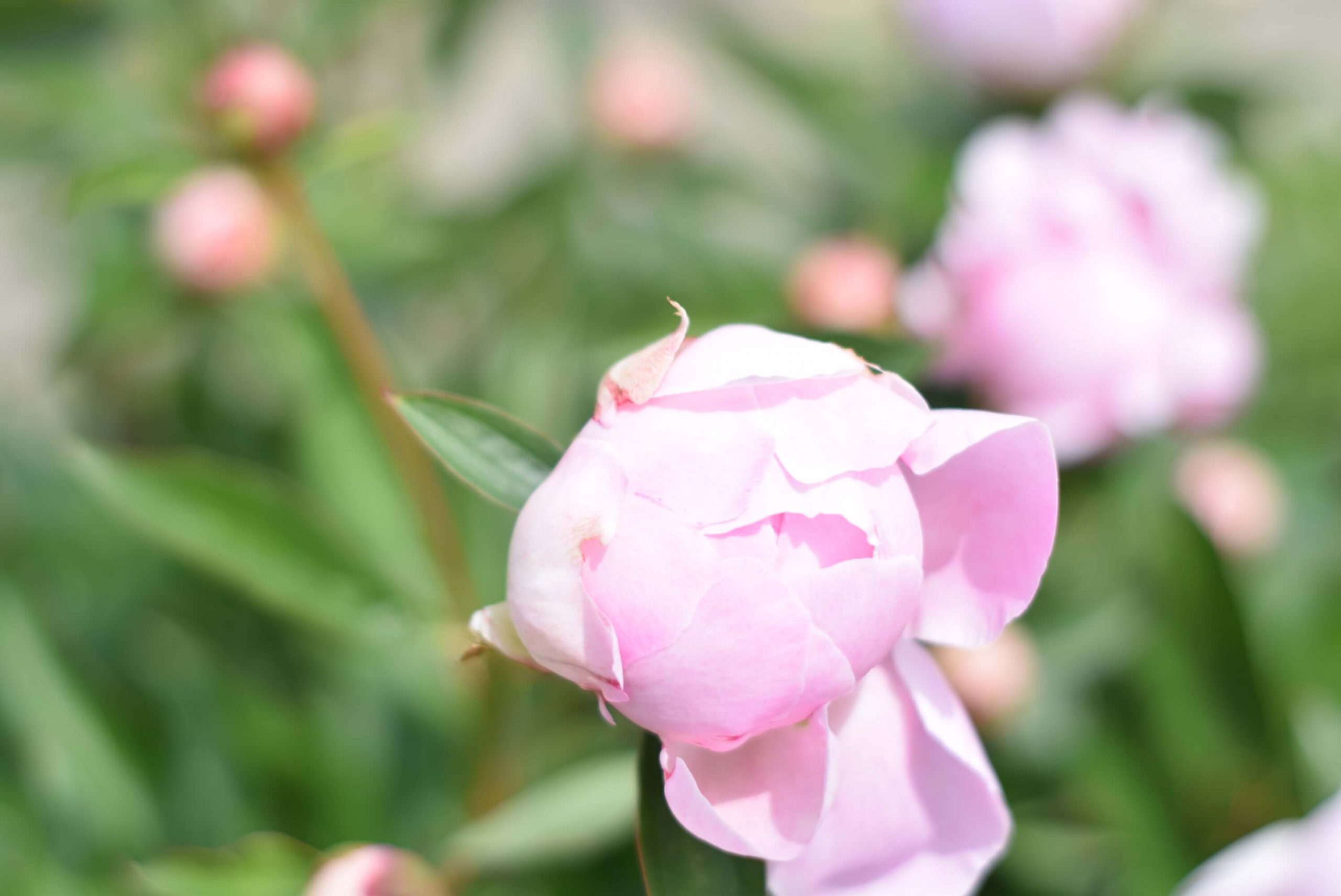
When do peonies bloom?
Peonies are perennial flowers, which means they live for more than two years, and produce flowers for a season. After their flowering season, the shoots become withered and fall off. They usually tolerate frost well. In the spring the shoots will come up again and new flowers will grow.
Peonies bloom in the spring with beautiful flowers. Althought the peony season isn’t very long, it’s still a beautiful eye catcher worth a place in the spring garden. The flowers remain bloom on the plant for about 7 to 10 days. After this, they become dry and then fall off after a while. The leaves and shoots remain green until autumn.
You can also cut some of the peonies’ flower buds off during flowering to put them in a vase indoors for a romantic peony bouquet. It is best to cut them off good, full and round peony buds that are about to open. Once in the vase it will open up beautifully.
If you want to enjoy romantic blooms for a longer period of time, you can put several varieties together in your peony garden. Some varieties bloom earlier or later than others, so you have peonies in the garden for longer. But, before we dive into different varieties, let’s look at how to plant new peony plants.
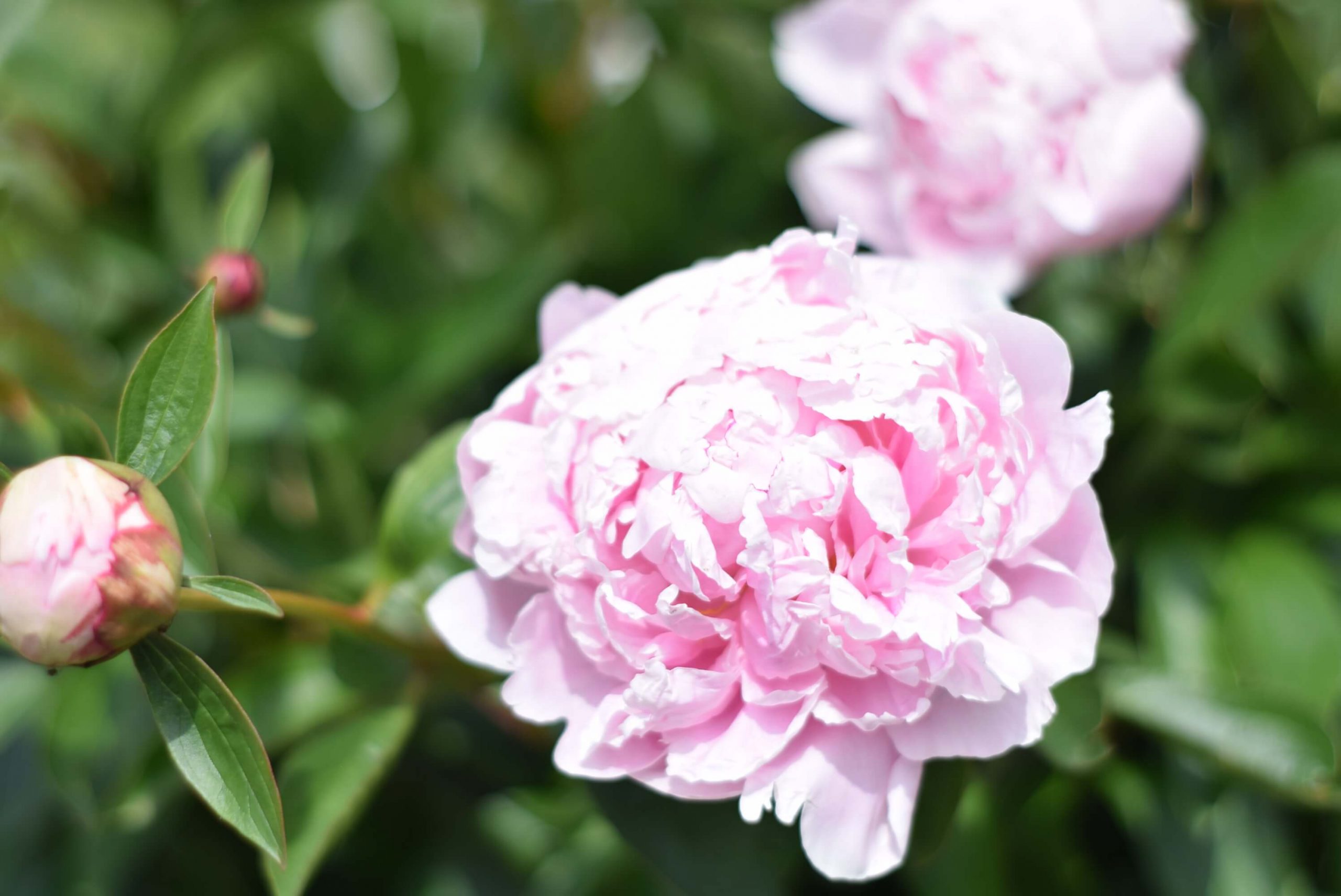
New peony plants
Peonies are a wonderful addition to the garden. You can plant potted peonies in the garden at any time of the year as long as it is not freezing. The best time to plant new peonies bought in pots, is when it is not too hot. Then you have the best chance of success.
If you decide buy peony roots, you should plant them in fall. Do not plant the roots too deep, not deeper than 1.5 – 2 inches. It is best to let the buds stick out just above the ground.
Make sure that the planting hole is spacious and that the soil is well-draining. The soil level should come to the point where the shoots emerge from the soil surface. The peony is a low maintenance plant that you will not have much work with.
The peonies may or may not bloom the first year after planting. But, remember, for best results, and a strong plant with lots of peony flowers, it’s better for the plant to develop a good root system first. That way you can enjoy it for many years to come.
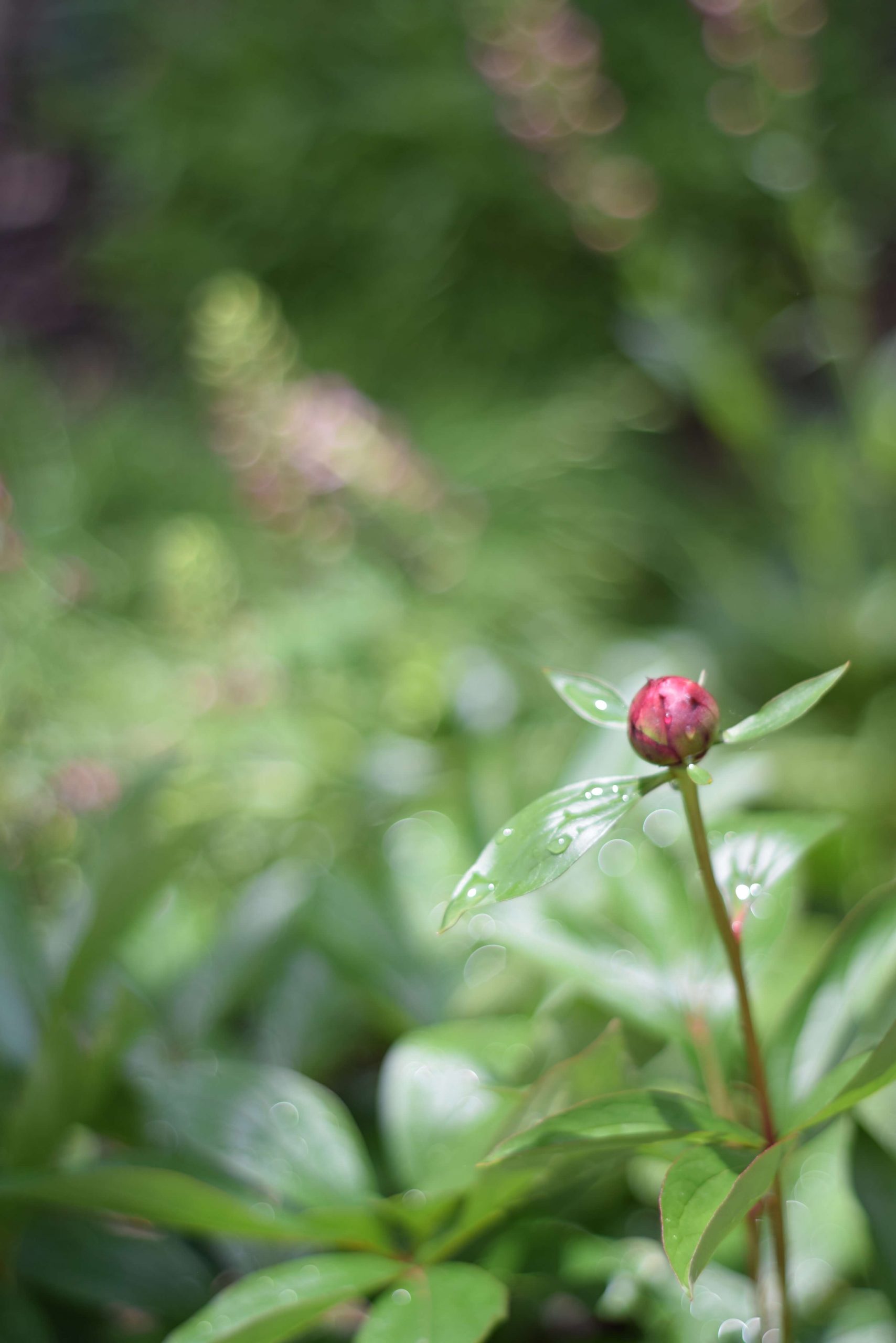
You might like…
Where to plant peonies
Peonies are a beautiful addition to the garden. There are even peony varieties that have fragrant blooms, which surely are a lovely addition to your flower beds. It will also attract those indispensable bees who love the sweet nectar. You can choose from white peonies to pink, red and purple. Peonies like to be in the sun to catch lots of hours of sunlight. So find a spot for the peonies where they get full sun. A shady spot is not a good idea for a peony, unless you choose woodland peonies. They do grow well in shady places.
In addition, make sure that the soil where you want to plant the peonies has good drainage. Eventually, the peony becomes a fairly large shrub. Therefore, keep in mind that you need to space peonies in a way that the plant has enough space to grow in the coming years.
Since peony bushes can grow quite large, it may be wise to support them during the growing season. You can use a plant cage or plant support for this. The stems of the peony often remain upright until the buds start to bloom. The bunches of flowering peonies then become too heavy, which causes the stems to hang or even snap. Even when the plant is still young and the shoots don’t look floppy yet, it may be wise to support the plant and protect is against strong winds. However do not pack them too tight as you still want a healthy, good air circulation around the peonies.
Peonies are tough plants and can tolerate a lot, so you need not worry when the first frost arrives. They like to be in the sun, but can also withstand cold climates as well as warmer climates. They are very hardy and survive even hard frost. Although they thrive in warm zones, they will do just as well in milder zones. They therefore do not need to be covered when it starts to freeze.
The peony stores enough reserves in the roots and then goes into a kind of hibernation mode. If you think there’s nothing left, just wait until next spring. You will see that peony eyes come up again as if they never went away.
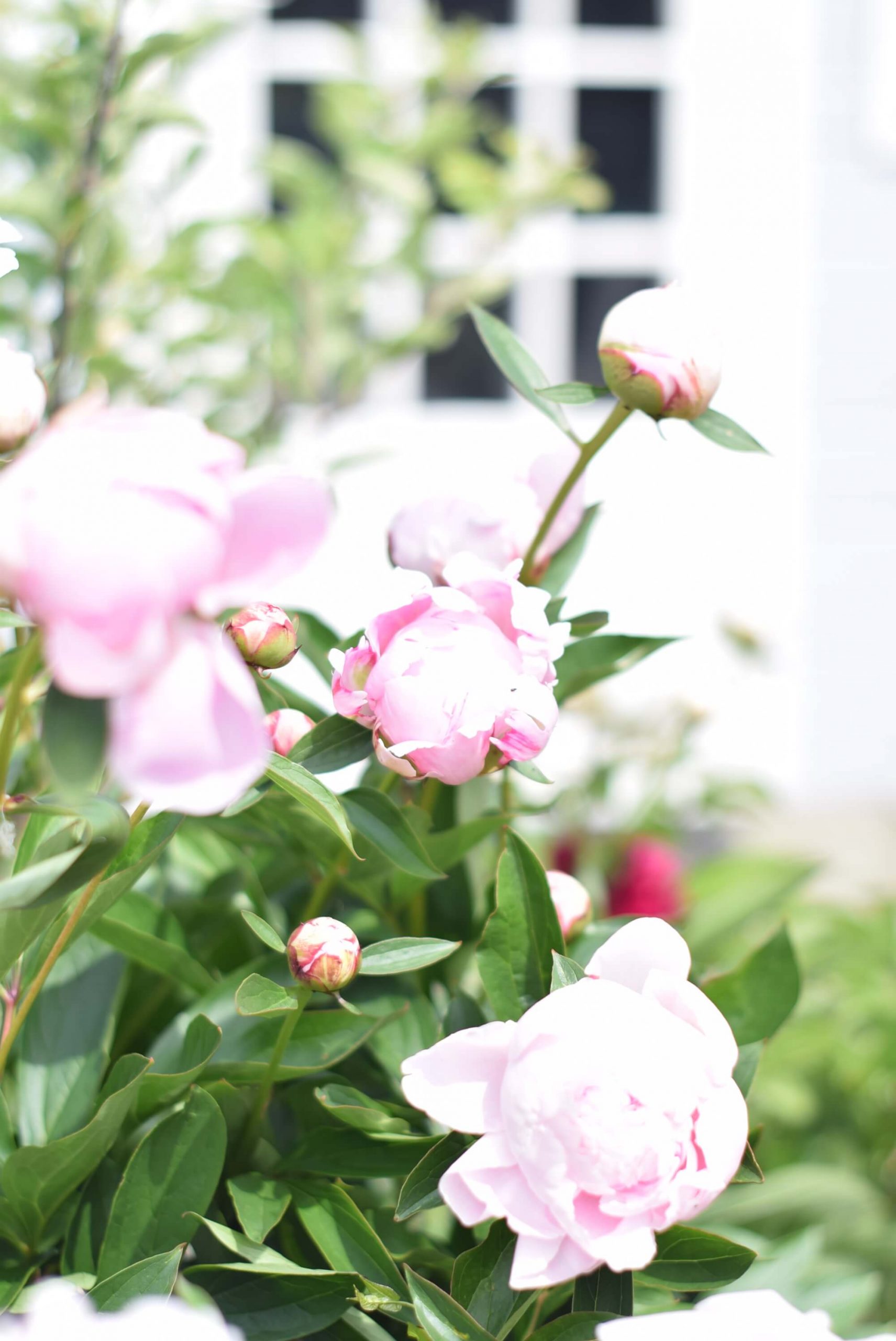
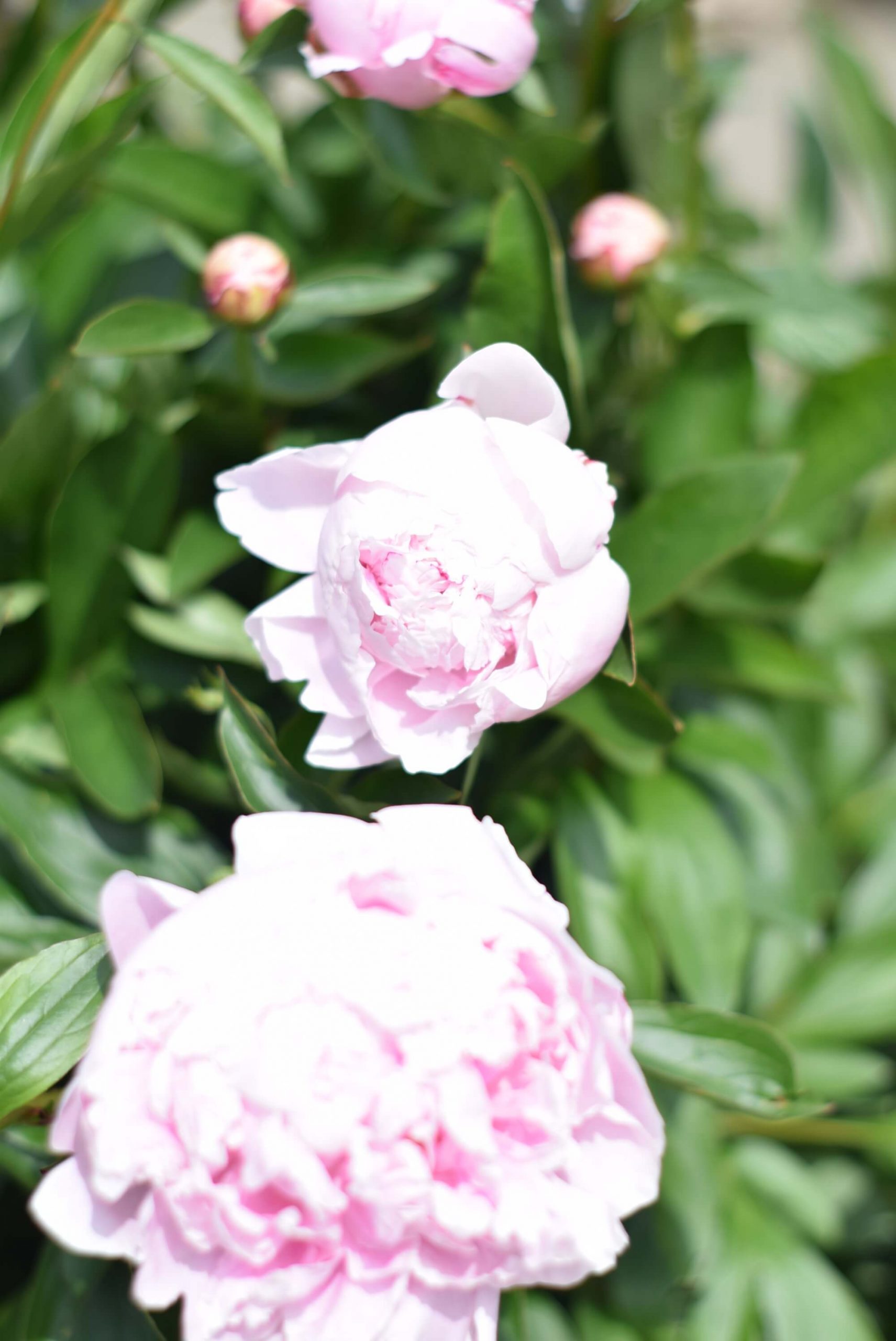
Rich soil for peonies
In addition, just before flowering, you can sprinkle some organic fertilizer, compost from your compost pile or lavameal around the base of the plant. It is important that the peony is not pruned back immediately after flowering. The plant uses the nutrients from the stems and peony leaves and stores them in the root of the plant for next season. There’ll be more in-depth info on cutting peonies later in this post.
When the peony can absorb enough nutrients from the soil, you ensure that the plant remains strong and healthy. As a result, it not only flowers more beautifully the following spring, it also ensures a strong, more disease-resistant plant. I like to put some mulch around the base of the plants. This also contains nutrients for the plant, slows down the growth of weeds and it ensures that the soil around the plant does not dry out too quickly. Besides that, I thinks it looks well maintained and pretty. For peonies, tree bark, pine needles or wood chips are a good idea.
Variety of peony (for a longer blooming season)
A good reason to put more different varieties together is that you can extend the flowering season in your flower garden. Peonies only bloom once per season and do not bloom for a very long time. If you choose different varieties that bloom at different times, you can enjoy the splendor of the peony for longer. You might be able to enjoy their beauty up to late spring or even early summer. Intersectional peonies or Itoh peonies are a hybrid form of garden peonies, crossing a tree peony and a herbaceous peony and are know to flower late. Different types of herbaceous peonies can flower early, alternating with different tree peonies and the Itoh peony for the end of the season and you can enjoy the flowers until the end of June. Of course taking in mind the zone in which you live. If you want to prolong the joy of peony bloom a little longer, even in late August you might be lucky to enjoy fresh peonies from the state of Alaska since their growing season is in July-August.
When choosing peonies for your flower garden, keep color in mind. While most peony colors are fairly soft, they almost always match. Nevertheless, it can be good to look at what is already in the garden. Maybe you have a color scheme and it is of course best if the peonies fit beautifully into it. You can find some wonderful pink peony suggestions at Green Garden Cottage.
It is also good to look at scented or non-scented variants. Peonies, like roses, can smell wonderful. The pink variants often produce the most fragrant flowers, but check or ask someone in your local garden centre whether the variant you have in mind is really fragrant. Some peonies do not smell at all.
If you choose a scented variety, be careful where you place it. A good place is of course a place where the smell stands out. A good place would be around the terrace, where the flowers can be clearly seen and the scent is noticeable. Or maybe you have a walkway in the garden that you pass by regularly. This is also a good place. Every time you walk by you smell the lovely smell of those romantic peonies.

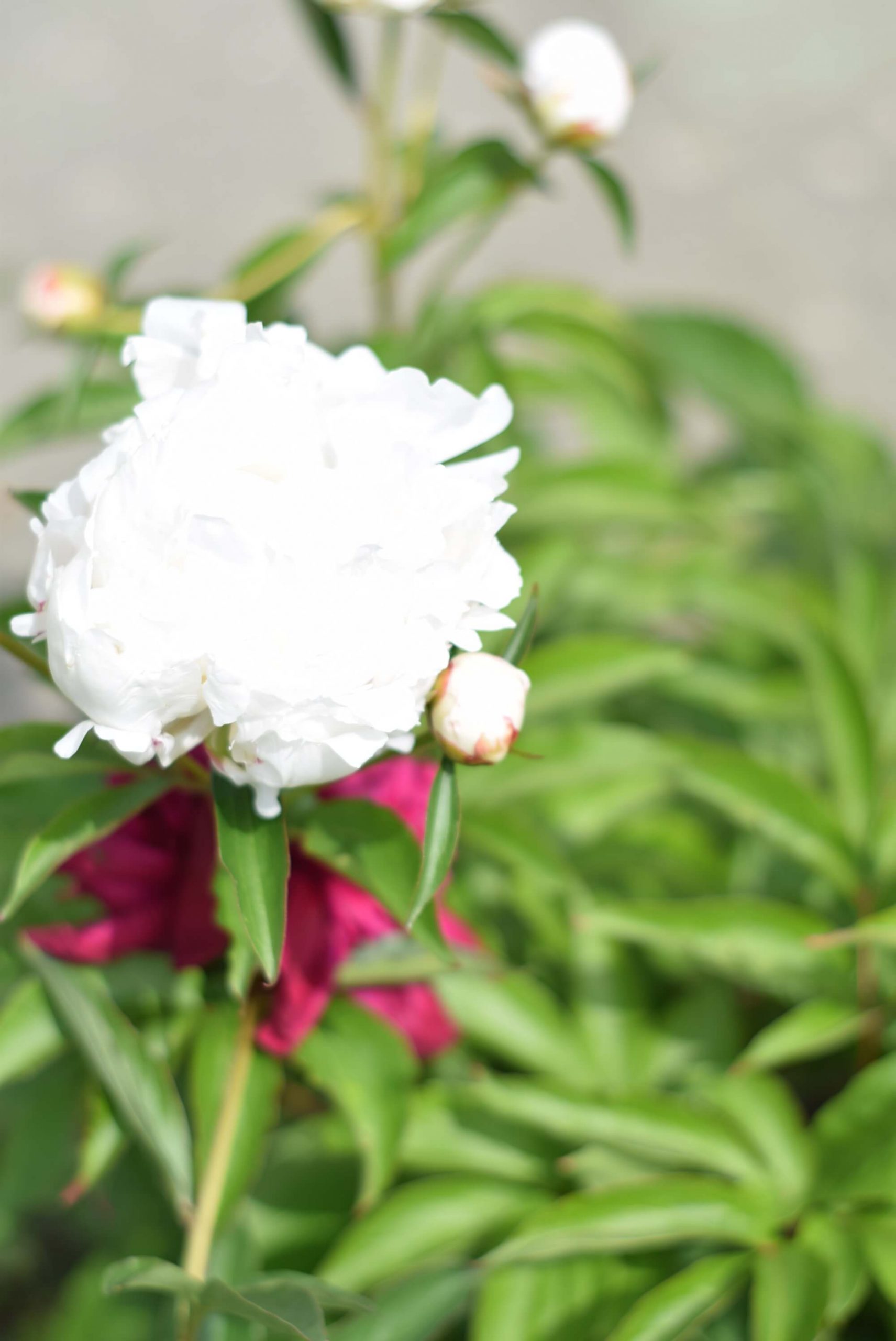
When to cut peonies after bloom?
When peonies have finished blooming, the flowers will turn brown and wither and over time the faded flowers will fall off the plant. The green stems and leaves then remain standing with their leaves and seed pods form in place of the fallen petals.
You can harvest the seeds late summer / early fall and from there you can grow your own peonies. Mind you, it takes about 3-5 years before you have a fairly sized plant with flowers. If you want to know how to grow peonies from seed, at Willow Garden they can tell you more.
The peony stems and leaves will eventually turn brown and wither. You could leave this around the plant. In the end, they are simply absorbed by the soil and they still contain many valuable nutrients for the entire plant to use next season. After all it’s still organic matter that helps in maintaining a healthy soil. After the winter, before the plant starts sprouting again, you can remove the plant debris before the plant stems start growing again.
If you are concerned that the plant may become susceptible to certain fungal diseases, you can cut the withered stems of the herbaceous peony and toss it with the compost once they are brown and dry. Fungal diseases like powdery mildew or botrytis blight weaken the plant and grow well in moist conditions. It not only harms the plant but may affect the whole peony plant potentially leaving it with diseased leaves and not so pretty flowers. Although, healthy peony plants may not be affected by these disease problems as easily as younger or weaker plants, it’s still wise to apply proper peony care.
What about the spent flowers? You could deadhead peonies after their bloom to keep the peony plant looking pretty and neat. With sharp pruning shears cut below the flower head and add it to the compost pile.
So, let’s come to he point here. When do you cut peonies after flowering? You basically leave the peony alone at the end of the season. You don’t have to cut anything, the main reason being that you want to give the plant time to store nutrients from the stems and leaves in the roots for the cold winter ahead. Although the peony can withstand cold well, take care you ensure that it has sufficient reserves for creating next year’s flowers.
Never stop learning…

Subscribe to the newsletter and receive more inspiration on gardening + simple living.
You can unsubscribe any time
Let’s summarize…
There are basically two types of peonies; tree peonies and herbaceous peonies. Tree peonies don’t need to be pruned unless there’s dead wood present. Then you remove the dead wood just above a new bud in early spring. Or, if it’s present near the base of the peony tree, cut away the dead wood to the ground.
Herbaceous peonies don’t need to be pruned or cut after blooming. At most you can deadhead the peony by removing spent flowers. Leave the stems and leaves until brown and whitered. The peony needs it to build a reserve for the winter season.
Helpful tools to care for your peonies:
- Plant cage to support the peonies
- Pruning shears for deadheading your peonies after blooming






